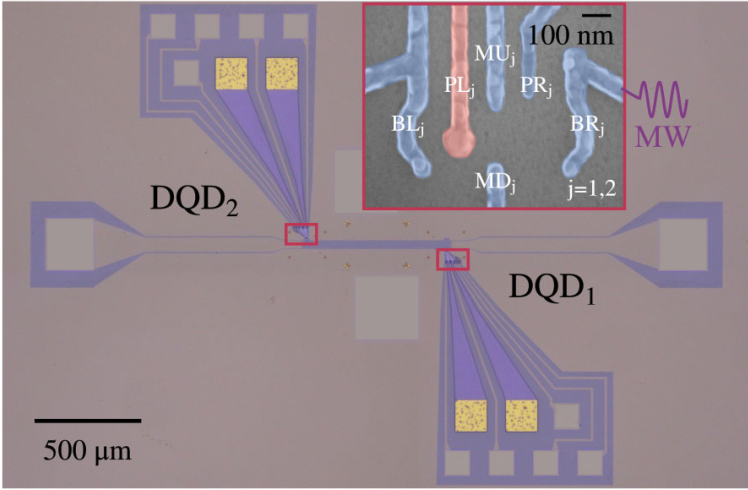New Theory for Periodically Driven Quantum Dots-Cavity System
A team led by Prof. GUO Guoping and Prof. CAO Gang from the University of Science and Technology of China (USTC) collaborating with senior researcher Sigmund Kohler from Materials Science Institute of Madrid, developed a response theory applicable to strongly coupled and multiqubit systems. Their work was published in Physical Review Letters as the cover article on June 9th.
Semiconductor quantum dot (QD) strongly coupled to microwave photons is the key to investigate light-matter interactions. In previous researches, the team used high-impedance super-conducting resonant cavity to implement the strong coupling of the QD-cavity hybrid system. Based on this strong coupling, the team further studied the circuit quantum electrodynamics (cQED) of the periodically driven, strongly coupled hybrid system.
Researchers first prepared a composite device of a high-impedance resonant cavity integrated with two double quantum dots (DQD). By probing the microwave response signal of the DQD-cavity hybrid system under periodic driving, the team found that the existing theory for dispersive cavity readout fails due to the enhancement of the coupling strength. Therefore, researchers developed a new response theory that treats the cavity as a part of the driven system, as opposed to the existing theory. Using this theory, the researchers successfully simulated and interpreted the signals in the experiment and further investigated the case of two-DQD-cavity hybrid system under periodic driving.

Optical micrograph of the DQD-cavity composite device. (Image by GU Sisi et al.)
This research blazed a trail for understanding periodically driven QD-cavity hybrid systems. Besides, the theoretical approach developed by the team is not only applicable to hybrid systems with different coupling strength, but also can be extended to multiqubit systems.
Paper link: https://doi.org/10.1103/PhysRevLett.130.233602
(Written by HUANG Rui, edited by ZHANG Yihang, USTC News Center)
Back
